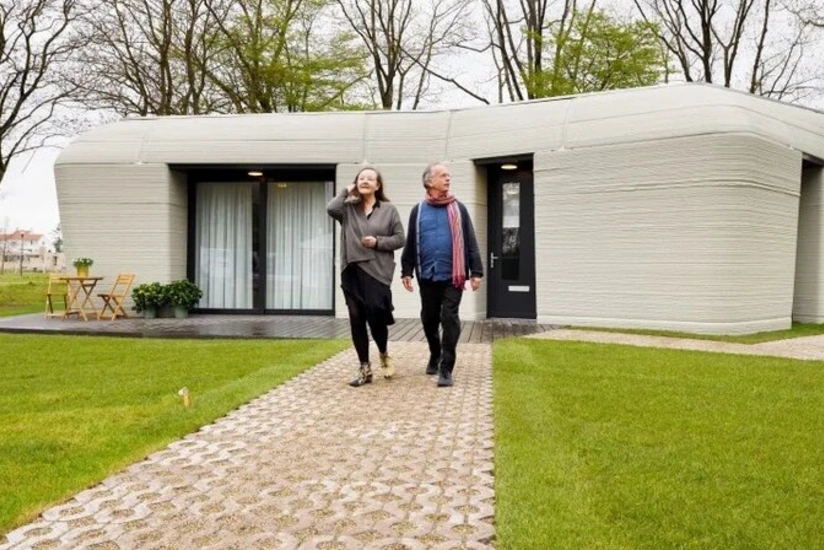Dutch couple move into Europe’s first fully 3D-printed house
- 30 April, 2021
- 15:00

Dutch couples have become Europe’s first tenants of a fully 3D printed house in a development that its backers believe will open up a world of choice in the shape and style of future homes.
Elize Lutz, 70, and Harrie Dekkers, 67, retired shopkeepers from Amsterdam, received their digital key – an app allowing them to open the front door of their two-bedroom bungalow at the press of a button – on Thursday.
“If you look at what time we needed to print this house, it was only 120 hours,” Huysmans said. “So all the elements, if we would have printed them in one go, it would have taken us less than five days because the big benefit is that the printer does not need to eat, does not need to sleep, it doesn’t need to rest. So if we would start tomorrow and learned how to do it, we can print the next house five days from now.”
In the last two years, properties partly constructed by 3D printing have been built in France and the US, and nascent projects are increasing worldwide.
But those behind the Dutch house, which boasts 94sq meters of living space, are said to have pipped their rivals to the post by being the first legally habitable and commercially rented property where the load-bearing walls have been made using a 3D printer nozzle.
The first completed home of Project Milestone, a partnership with the Eindhoven University of Technology and the Vesteda housing corporation, was due to be put on the rental market in 2019. Still, the challenges of the architect’s design, which involved overhanging external walls, caused delays.
The 3D printing method involves a substantial robotic arm with a nozzle that squirts out a specially formulated cement, said to have the texture of whipped cream. According to an architect's design, the adhesive is “printed”, adding layer upon layer to create a wall to increase its strength.
